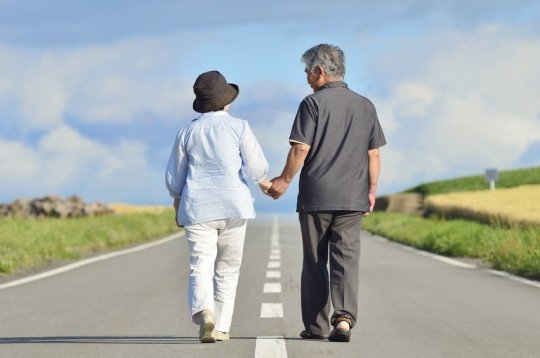[ad_1]
A 30-year gap separates countries with the highest and lowest ages at which people experience the health problems of a 65-year-old, according to a new scientific study.
Researchers found 76-year-olds in Japan and 46-year-olds in Papua New Guinea have the same level of age-related health problems as an “average” person aged 65.
“These disparate findings show that increased life expectancy at older ages can either be an opportunity or a threat to the overall welfare of populations, depending on the aging-related health problems the population experiences regardless of chronological age.” said Dr. Angela Y. Chang, lead author and postdoctoral fellow at the Center for Health Trends and Forecasts at the University of Washington. “Age-related health problems can lead to early retirement, a smaller workforce, and higher health spending. Government leaders and other stakeholders influencing health systems need to consider when people begin suffering the negative effects of aging.”
These negative effects include impaired functions and loss of physical, mental, and cognitive abilities resulting from the 92 conditions analyzed, five of which are communicable and 81 non-communicable, along with six injuries.
The studies and additional information are available at http://www.healthdata.org
The study, published yesterday in the international medical journal The Lancet Public Health, is the first of its kind, according to Chang, whose center is housed at the UW’s Institute for Health Metrics and Evaluation. Where traditional metrics of aging examine increased longevity, this study explores both chronological age and the pace at which aging contributes to health deterioration. The study uses estimates from the Global Burden of Disease study (GBD).
Researchers measured “age-related disease burden” by aggregating all disability-adjusted life years (DALYs), a measurement of loss of healthy life, related to the 92 diseases. The findings cover 1990 to 2017 in 195 countries and territories. For example, in 2017, people in Papua New Guinea had the world’s highest rate of age-related health problems with more than 500 DALYs per 1,000 adults, four times that of people in Switzerland with just over 100 DALYs per 1,000 adults.
The rate in the United States was 161.5 DALYs per 1,000, giving it a ranking of 53rd, between Algeria at 52nd with 161.0 DALYs per 1,000 and Iran at 54th with 164.8 DALYs per 1,000.
Using global average 65-year-olds as a reference group, Chang and other researchers also estimated the ages at which the population in each country experienced the same related burden rate. They found wide variation in how well or poorly people age. Ranked first, Japanese 76-year-olds experience the same aging burden as 46-year-olds in Papua New Guinea, which ranked last across 195 countries and territories. At 68.5 years, the United States ranked 54th, between Iran (69.0 years) and Antigua and Barbuda (68.4 years).
The study is entitled “Measuring population ageing: an analysis of the Global Burden of Disease Study 2017.”
Additional findings include:
- Age-related disease burden rates decreased over time across all regions between 1990 and 2017, representing reductions in deaths and disease severity of age-related problems.
- In 2017, people in 108 countries experienced earlier accumulation of problems associated with aging, whereas those in 87 countries experienced slower onset of aging.
- Globally, the age-related diseases with the most deaths and DALYs were ischemic heart disease, brain hemorrhage, and chronic obstructive pulmonary disease (COPD).
Countries with highest equivalent age to global 65-year-olds in 2017:
- 1. Japan: 76.1 years
2. Switzerland: 76.1
3. France: 76.0
4. Singapore: 76.0
5. Kuwait: 75.3
6. South Korea: 75.1
7. Spain: 75.1
8. Italy: 74.8
9. Puerto Rico: 74.6
10. Peru: 74.3
Countries with lowest equivalent age to global 65-year-olds in 2017:
- 1. Papua New Guinea: 45.6 years
2. Marshall Islands: 51.0
3. Afghanistan: 51.6
4. Vanuatu: 52.2
5. Solomon Islands: 53.4
6. Central African Republic: 53.6
7. Lesotho: 53.6
8. Kiribati: 54.2
9. Guinea-Bissau: 54.5
10. Federated States of Micronesia: 55.0
Countries with lowest age-related burden rate in 2017:
- 1. Switzerland: 104.9 DALYs per 1,000 adults aged 25 or older
2. Singapore: 108.3
3. South Korea: 110.1
4. Japan: 110.6
5. Italy: 115.2
6. Kuwait: 118.2
7. Spain: 119.2
8. France: 119.3
9. Israel: 120.2
10. Sweden: 122.1
Countries with highest age-related burden rate in 2017:
- 1. Papua New Guinea: 506.6 DALYs per 1,000 adults aged 25 or older
2. Marshall Islands: 396.6
3. Vanuatu: 392.1
4. Afghanistan: 380.2
5. Solomon Islands: 368.0
6. Central African Republic: 364.6
7. Lesotho: 360.5
8. Kiribati: 347.5
9. Guinea-Bissau: 343.4
10. Eritrea: 325.7
[ad_2]















